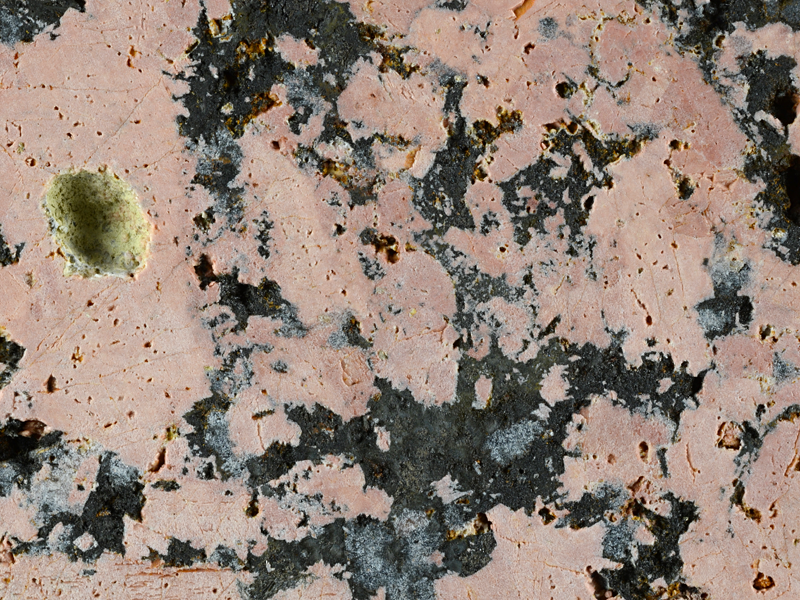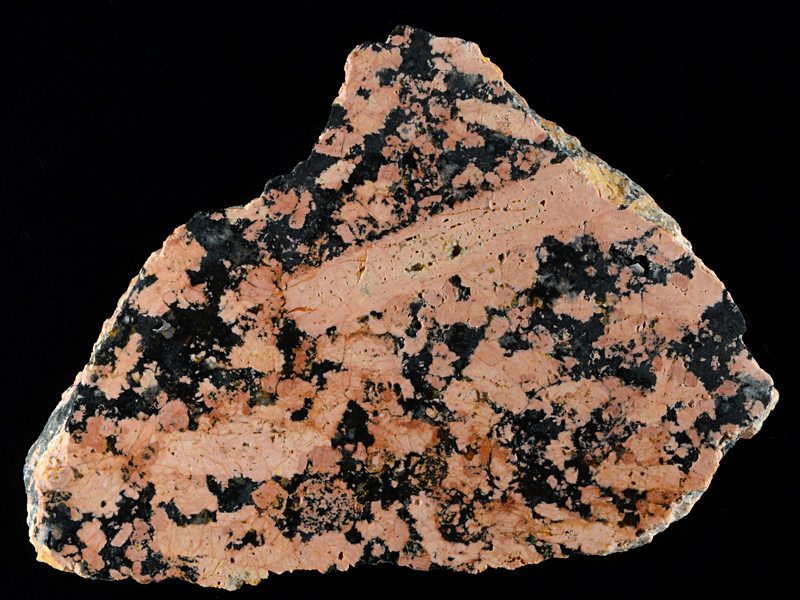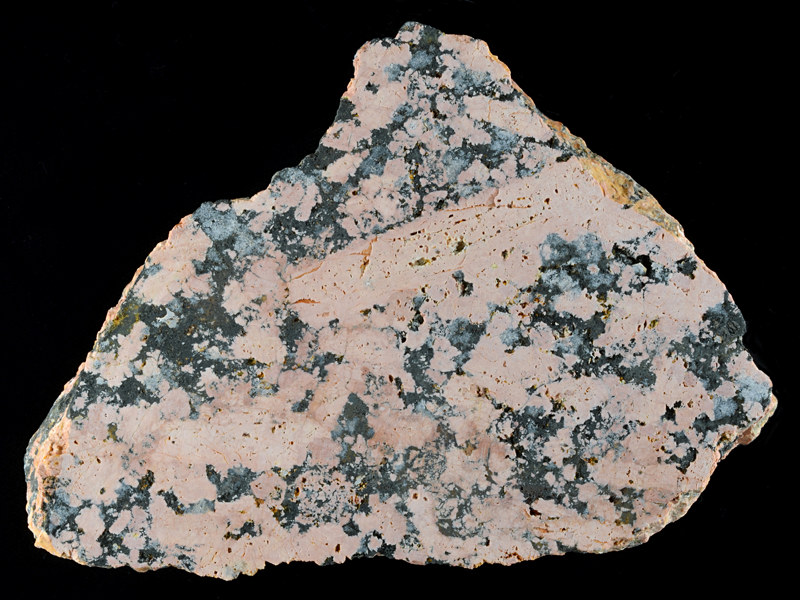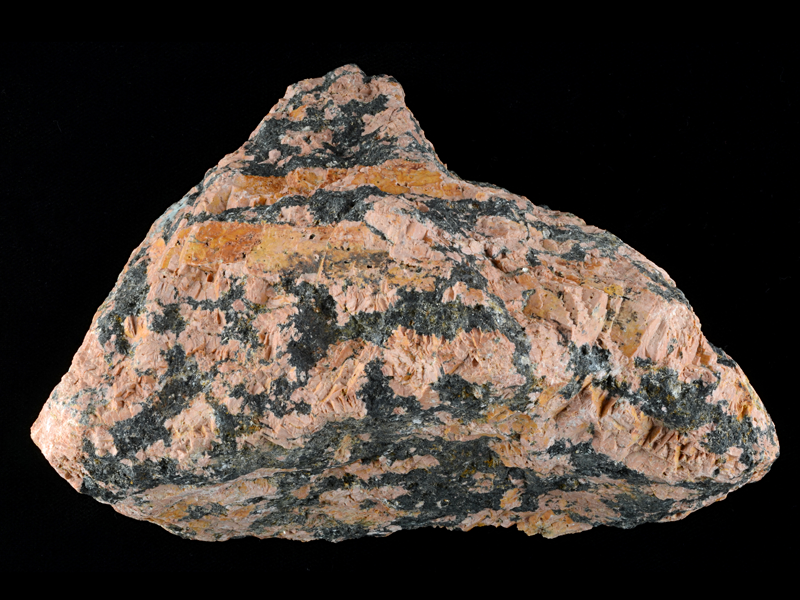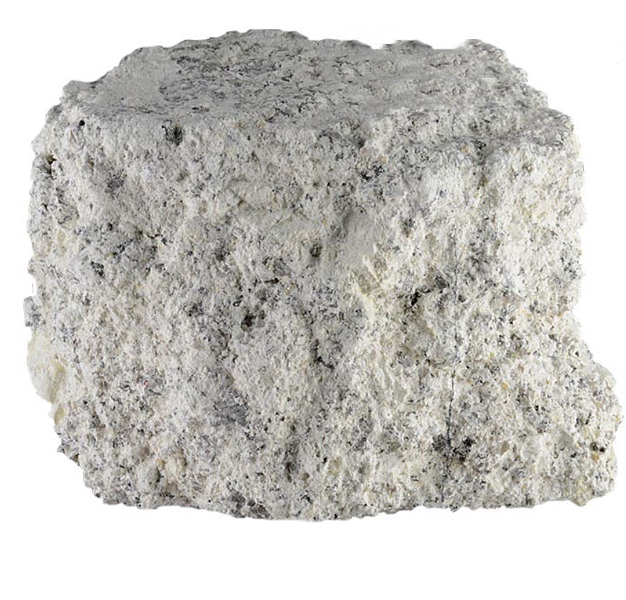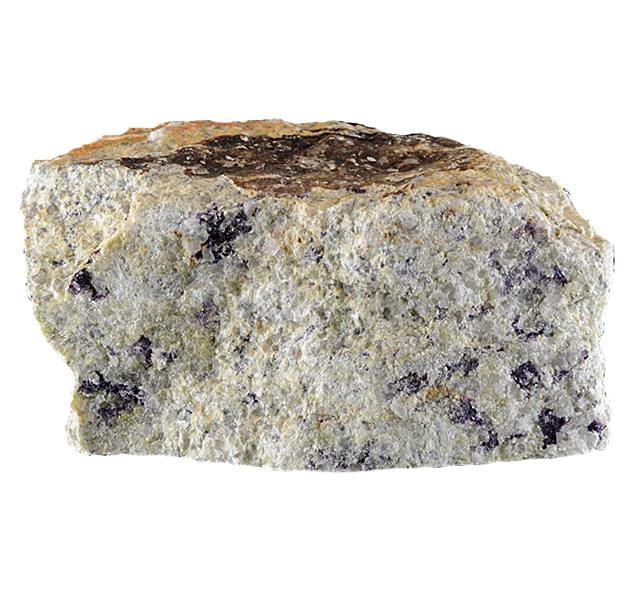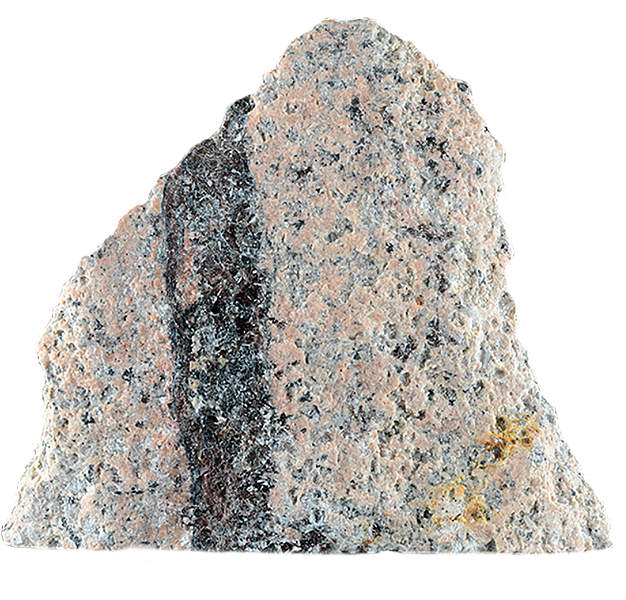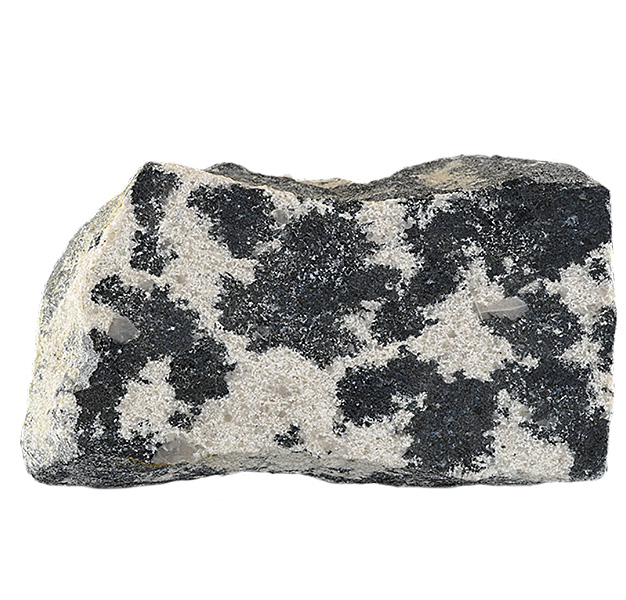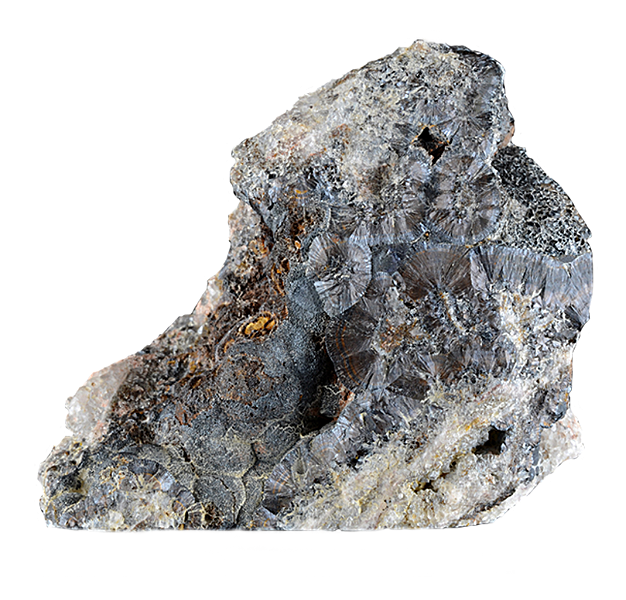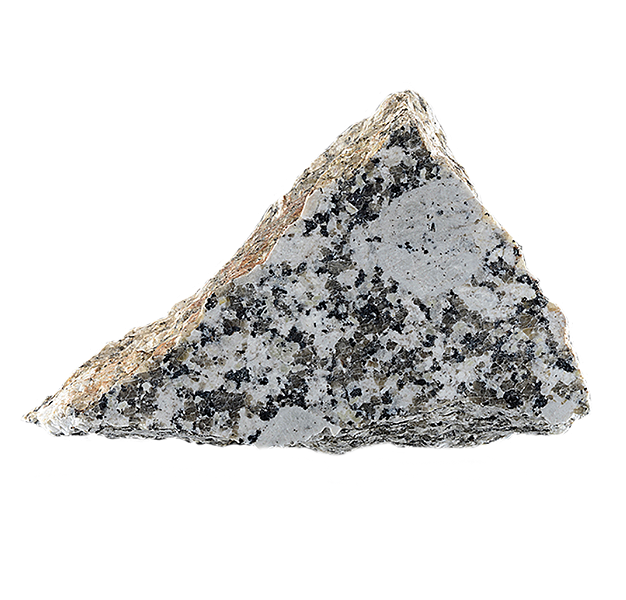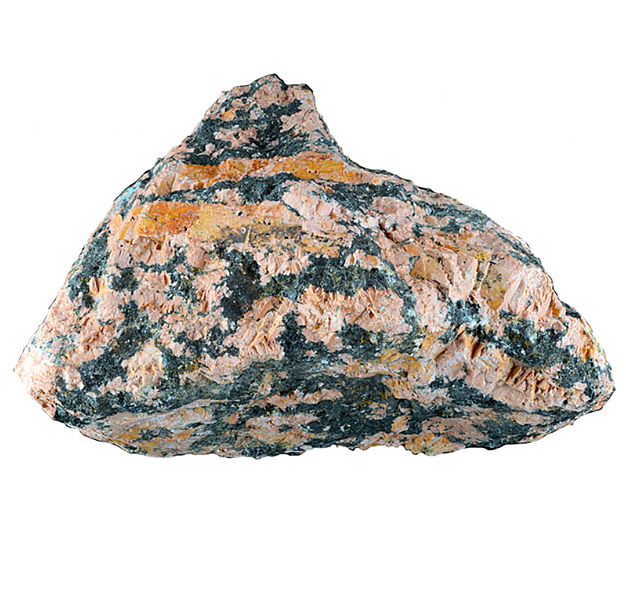
Fact sheet
Luxullianite is a rare type of tourmaline-rich granite named after the village of Luxulyan in Cornwall. Luxullianite is formed from boron-rich pegmatitic fluids caused by fractional crystallisation of the biotite-rich St Austell granite complex, which formed around 280 million years ago by partial melting of the lower continental crust during the Variscan orogeny.
In hand specimen the rock appears to consist of two main parts – striking salmon pink tabular feldspar shapes, and black tourmaline that appears to be infilling. Luxulyan quarry is a large (now water-filled) hole on the outskirts of the village. The quarry has been designated an SSSI (site of special scientific interest), and access and collecting is not normally possible.
In thin section the large feldspar shapes that appear pink in hand specimen are only partly transparent and appear dark. The feldspar grains exhibit some features characteristic of feldspar, and their partial alteration to kaolinite and sericite is part of a sequence from pure granite to clays in our collection of SW England granites. The other minerals present are tourmaline, white mica and quartz. Radial tourmaline crystals growing into cavities are visible in this thin section but are much better developed in other Luxullianite samples in the collection.
A case study of the St Austell granite complex in Cornwall, England, illustrating the range of rocks associated with a granite intrusion. The earliest part of the complex is a siderophyllite (biotite) granite containing muscovite and tourmaline typical of a SW England granite, with many primary magmatic features.
This early intrusion was followed by the intrusion of an evolved volatile-rich magma which was the driving force behind a series of intense hydrothermal processes as volatiles escaped from this magma and helped to establish an extensive alteration halo (aureole). Boron, fluorine and lithium (as well as water) played major roles in the formation of the second intrusion and in the associated hydrothermal processes. Igneous activity lasted around 18 million years from 282 Ma (siderophyllite granite) to 265 Ma (fluorite granite).
